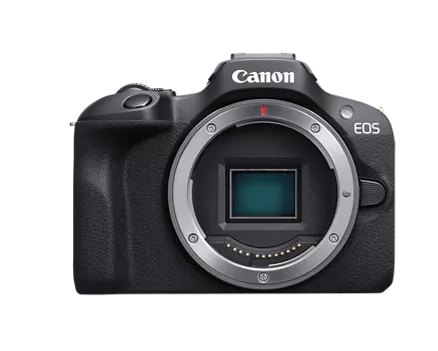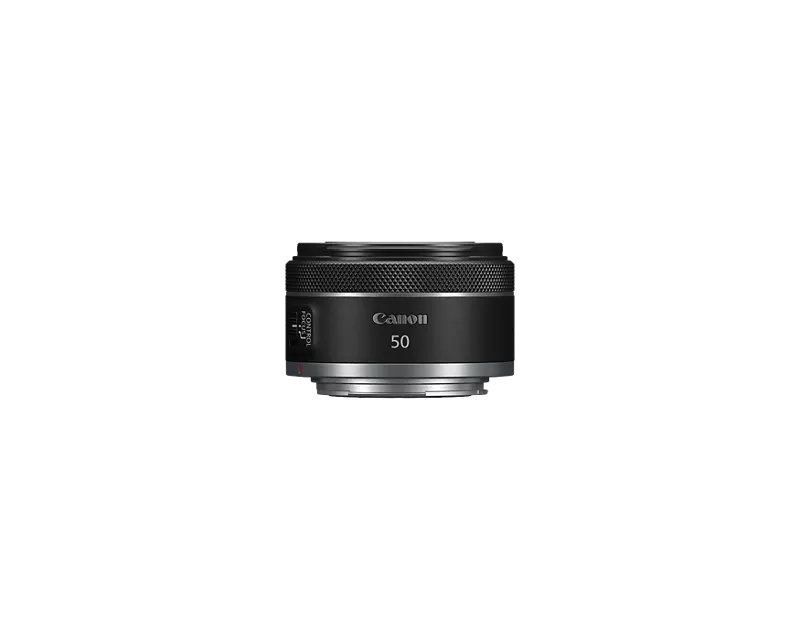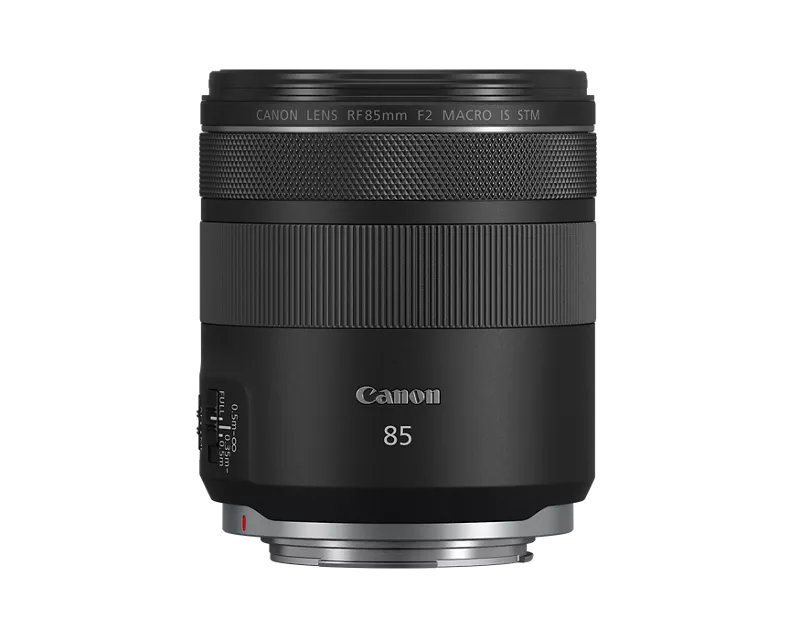- Canon Community
- Discussions & Help
- Camera
- EF & RF Lenses
- Headshot Advice Needed - Lens Recommendations
- Subscribe to RSS Feed
- Mark Topic as New
- Mark Topic as Read
- Float this Topic for Current User
- Bookmark
- Subscribe
- Mute
- Printer Friendly Page
Headshot Advice Needed - Lens Recommendations
- Mark as New
- Bookmark
- Subscribe
- Mute
- Subscribe to RSS Feed
- Permalink
- Report Inappropriate Content
10-15-2024
10:22 AM
- last edited on
10-15-2024
10:24 AM
by
Danny
Hi everyone!
I am taking our company's headshots but don't have much experience with photography. We recently purchased a Canon EOS R100, and I'm in need of lens recommendations. We'll be taking these indoors (Lighting kits recs would be great too!), and I'm hoping to keep the lens price $500 or less. I would greatly appreciate your help!
- Mark as New
- Bookmark
- Subscribe
- Mute
- Subscribe to RSS Feed
- Permalink
- Report Inappropriate Content
10-15-2024 10:36 AM
What lens do you have?
At your level the kit lens should work fine. The idea is to practice, practice, practice. As you identify deficiencies, you can make changes.
- Mark as New
- Bookmark
- Subscribe
- Mute
- Subscribe to RSS Feed
- Permalink
- Report Inappropriate Content
10-15-2024 10:39 AM
I just have the kit lens right now. I'm hoping to make these looks as professional as possible!
- Mark as New
- Bookmark
- Subscribe
- Mute
- Subscribe to RSS Feed
- Permalink
- Report Inappropriate Content
10-15-2024 10:49 AM
Probably the best way to use your $500 budget is to get the RF 50mm F1.8 STM lens, currently $199 from Canon and spend the rest on one or two LED lights with soft boxes. I'd also study how professionals light headshots, knowing that it does vary between white background and in-conference room or office locations.
Brian
EOS specialist trainer, photographer and author
-- Note: my spell checker is set for EN-GB, not EN-US --
- Mark as New
- Bookmark
- Subscribe
- Mute
- Subscribe to RSS Feed
- Permalink
- Report Inappropriate Content
10-15-2024 10:50 AM
More gear will not make them look "professional", as I said, practice.
Find a good window with northern exposure and go for it. Just like the old masters.
- Mark as New
- Bookmark
- Subscribe
- Mute
- Subscribe to RSS Feed
- Permalink
- Report Inappropriate Content
10-15-2024 11:16 AM - edited 10-16-2024 11:52 AM
Pay attention to this........
"I just have the kit lens right now."
That is all you need so don't listen to any body suggesting you buy a different lens. It will be wasted money.
I can't any more strongly disagree with this advice below.
"Probably the best way to use your $500 budget is to get the RF 50mm F1.8 STM lens, currently $199 from Canon and spend the rest on one or two LED lights with soft boxes.
First off you have 50mm in the kit lens already. Secondly using light boxes for a novice is wrought with issues.
Again read this once more, "More gear will not make them look more "professional"..."
I am a person that did this type work for 40 years for a large company in KC and my own private practice still to this day. Beyond the camera and lens you will need a suitable backdrop and some photo editing software. You can get the latter form Canon for free. Its called DPP4 and you d/l it form the Canon website.
"I'm hoping to make these looks as professional as possible!"
Then hire a professional photographer it is very much likely to be the cheapest way to go. I don't know your area or how many photos are needed so I don't know how far $500 bucks would go toward that.
EOS 1D, EOS 1D MK IIn, EOS 1D MK III, EOS 1Ds MK III, EOS 1D MK IV and EOS 1DX and many lenses.
- Mark as New
- Bookmark
- Subscribe
- Mute
- Subscribe to RSS Feed
- Permalink
- Report Inappropriate Content
10-15-2024 01:19 PM - edited 10-16-2024 11:51 AM
Like my respected colleague Ernie, who has a background in this, I am wondering why you, as an admitted novice, have been assigned this task for a business purpose instead of hiring a professional. I would guess it is a small business with a limited budget and hopefully not too many employees. If that is so, all we can do is try to make this work for you as best we can.
As my colleagues have alluded to, this is a limiting budget and for any decent lens you will not be looking at a significant lighting rig. Personally, as @KVBarkely said, a good source of indirect natural light is best to give you a soft, even light to keep things simple, and so you don't need lighting gear. I recently took a series of headshots for a professional group of scientists as a favour as they had NO budget, and these are some samples of the results using that lighting technique.


Things of note:
1. I chose a plain, neutral background (I used a mid-gray as it was in the foyer of their building and that reflectance of background will give a good exposure reading ), I was looking for a consistent background - you don't want lots of significant changes in colour or clutter. The indirect, soft light reduced facial shadows, stops them squinting and, by reducing wrinkles, makes people look younger (which you will find older folks like).
2. In my case I was using a full-frame camera with a focal length between 70-130mm - in your case, because you have a crop-sensor camera, which has a magnifying effect, you would select something in the range of 50-80mm.
3. I had the subjects about 3m (10ft) away from the wall to keep it out of focus, and avoid wall shadows, and shot with a focal range in the f/4 -f/8 range. You would likely shoot from f/2-f/4.
4, I was using auto ISO but limited to 3200.
5. Shoot in both JPG and RAW file formats, both at maximum resolution
6. Make sure you have Face and Eye tracking for people turned on in the camera and, if you are shooting hand-held that image stabilization is on. Also, look through the viewfinder not the LCD and hold the camera properly:
So, a lens as has been suggested one of the following, which you can get from the Canon Refurbished Lens Store:
a) $160 for a 50mm would give you an equivalent focal length for your camera of 80mm:
Shop Canon Refurbished RF50mm F1.8 STM | Canon U.S.A, Inc.
b) $490 for RF 80mm f/2 Macro lens - an equivalent FL of 135mm, also excellent for portrait work and a shade under budget:
Shop Canon Refurbished RF85mm F2 Macro IS STM | Canon U.S.A., Inc.
In both cases you need to compose so that you get roughly the torso or bust in view, make sure the camera is level and get the subject to look directly at the lens. I often suggest they close their eyes, and I give them a countdown to open them, at which point I take the shot - which makes the pupils of the eyes larger.
Men often prefer to be slightly oblique to the camera (although not always depending on light) women prefer to face on - it reduces wrinkles.
Beware of reflections or distortions from glasses, so position your subject carefully to avoid that. Also watch for bright reflections of bald heads or jewelry!
Beforehand, tell everyone what the procedure is, when and where to go, and that everyone should be clean, and dressed according to company policy - tell them this is how they will be seen by their clients. If there are a lot of people, you may want to give different groups specific time slots and be prepared to adapt and negotiate - business will go on even when you are shooting.
When taking the images, if you can, take a few moments to talk to the person about their job, hobbies or whatever to make them relax it makes a difference to the muscles of the face and neck. I always assure them that there will be no images published without their approval, it takes away some of the stress and that I can re-shoot if they don't like the results.
Take several images, and I usually do one slightly facing left, then centre, then slightly right: not just one. Everyone has a preferred side.
You will need to do some post processing and if you have a art/marketing department they will likely have software and the skills to complete the image process. Otherwise you may want to become acquainted with Digital Photo Professional 4, which is a free program with your camera and is used to process images.
Recon the location and find someone to practise with before the actual shoot to make sure you are not in learning mode.
cheers, TREVOR
The mark of good photographer is less what they hold in their hand, it's more what they hold in their head;
"All the variety, all the charm, all the beauty of life is made up of light and shadow", Leo Tolstoy;
"Skill in photography is acquired by practice and not by purchase" Percy W. Harris
- Mark as New
- Bookmark
- Subscribe
- Mute
- Subscribe to RSS Feed
- Permalink
- Report Inappropriate Content
10-15-2024 08:49 PM
hchinkel,
From what I have observed, people doing portrait work seem to prefer lenses in one of three ranges: 135mm, 85mm, and 50mm.
135mm will give you headshots. 85mm will give you body shots. 50mm will give you shots of your subject in their environment.
Look at the three samples that Trevor provided: 126mm, 129mm, and 154mm.
Of course, it will depend on how close you are to your subject. You can take a 50mm lens and fill up the entire frame with your subject's nose, if you are sitting in their lap. 😁
Steve Thomas
- Mark as New
- Bookmark
- Subscribe
- Mute
- Subscribe to RSS Feed
- Permalink
- Report Inappropriate Content
10-16-2024 01:01 AM - edited 10-16-2024 12:12 PM
Hi Steve:
Thanks for your input, just note that the focal lengths I provided with the sample photogs were for a full-frame camera, as I mentioned because the OP is using a crop sensor camera, so my focal length (as indicated in the sample images) should be divided by 1.6 to get the values the OP wants.
Consequently, the focal lengths they would use would be 50mm or 85mm to get the equivalent of an 80mm or 135mm on the FF body. I used lenses of those values to make sure they did not give an unflattering effect for the subjects and, as you correctly observe, provide some distance between me as the photographer and my subject - for their comfort. Thus those are the lenses I have recommended and provided purchase links for.
cheers, TREVOR
The mark of good photographer is less what they hold in their hand, it's more what they hold in their head;
"All the variety, all the charm, all the beauty of life is made up of light and shadow", Leo Tolstoy;
"Skill in photography is acquired by practice and not by purchase" Percy W. Harris
- Mark as New
- Bookmark
- Subscribe
- Mute
- Subscribe to RSS Feed
- Permalink
- Report Inappropriate Content
10-16-2024 08:49 AM - edited 10-16-2024 10:31 AM
Trevor,
Yes. I thought of that after I had hit the send button. I hope that hchinkel, understood that I was referring to equivalent focal lengths.
On his crop sensor camera, an 85mm lens would be equivalent to 136mm, which I think would be good for head shots.
Steve
03/18/2025: New firmware updates are available.
EOS R5 Mark II - Version 1.0.3
02/20/2025: New firmware updates are available.
RF70-200mm F2.8 L IS USM Z - Version 1.0.6
RF24-105mm F2.8 L IS USM Z - Version 1.0.9
RF100-300mm F2.8 L IS USM - Version 1.0.8
RF50mm F1.4 L VCM - Version 1.0.2
RF24mm F1.4 L VCM - Version 1.0.3
01/27/2025: New firmware updates are available.
01/22/2024: Canon Supports Disaster Relief Efforts in California
01/14/2025: Steps to resolve still image problem when using certain SanDisk SD cards with the Canon EOS R5 Mark II
12/18/2024: New firmware updates are available.
EOS C300 Mark III - Version 1..0.9.1
EOS C500 Mark II - Version 1.1.3.1
12/13/2024: EOS Webcam Utility Pro V2.3b is now available to support Windows on ARM PC users.
11/14/2024: Windows V 2.3a installer for EOS Webcam Utility Pro is available for download
11/12/2024: EOS Webcam Utility Pro - Version 2.3 is available
09/26/2024: New firmware updates are available.
- Lookin for EOS R10 lenses for concert phtography mostly in EF & RF Lenses
- EOS R50: Need lens recommendation for everyday photos & lowlight museum photographs in EF & RF Lenses
- I need camera recommendations for car pics and videos in EOS DSLR & Mirrorless Cameras
- I need recommendations on buying a mid range mirrorless for sports and outdoor in EOS DSLR & Mirrorless Cameras
Canon U.S.A Inc. All Rights Reserved. Reproduction in whole or part without permission is prohibited.





